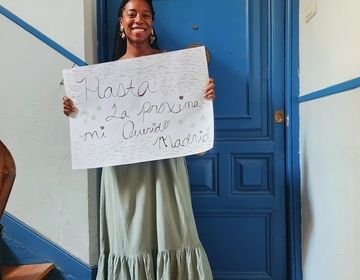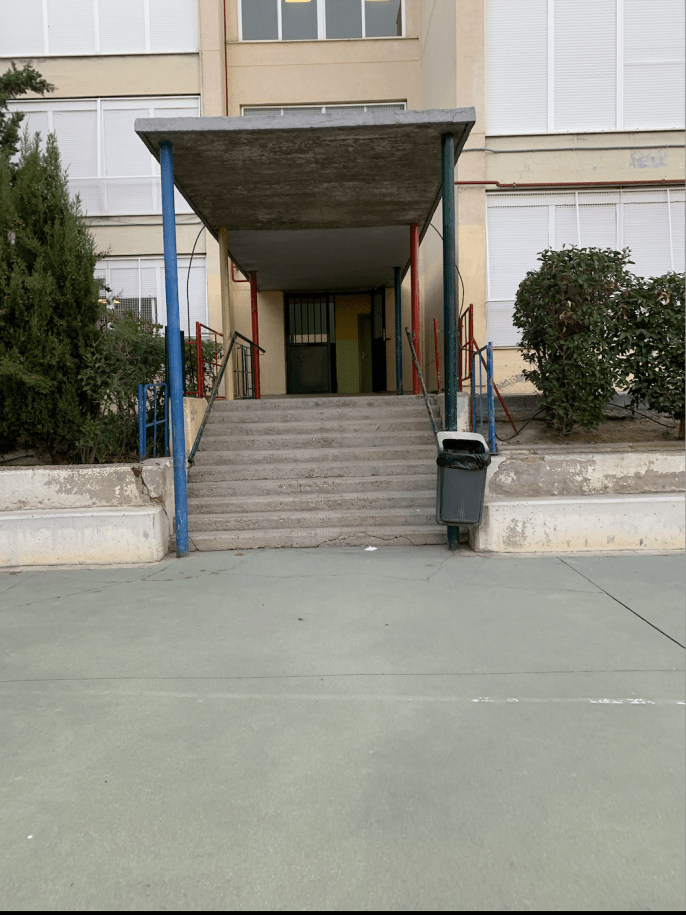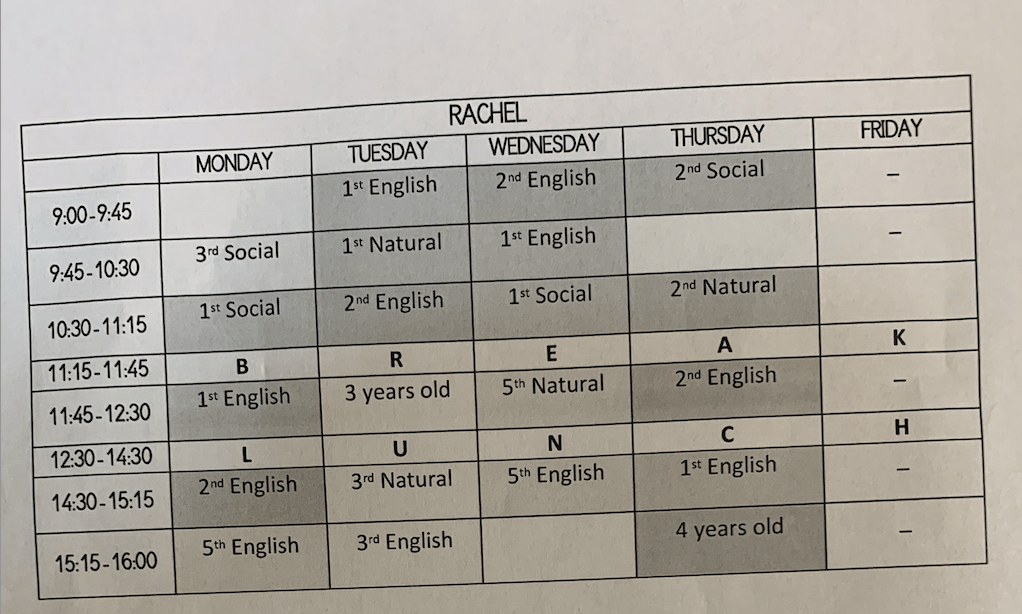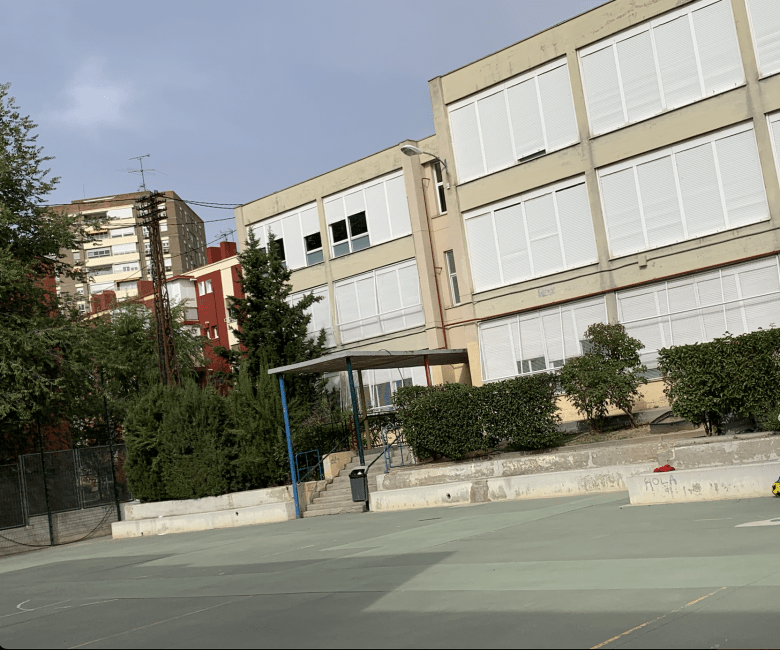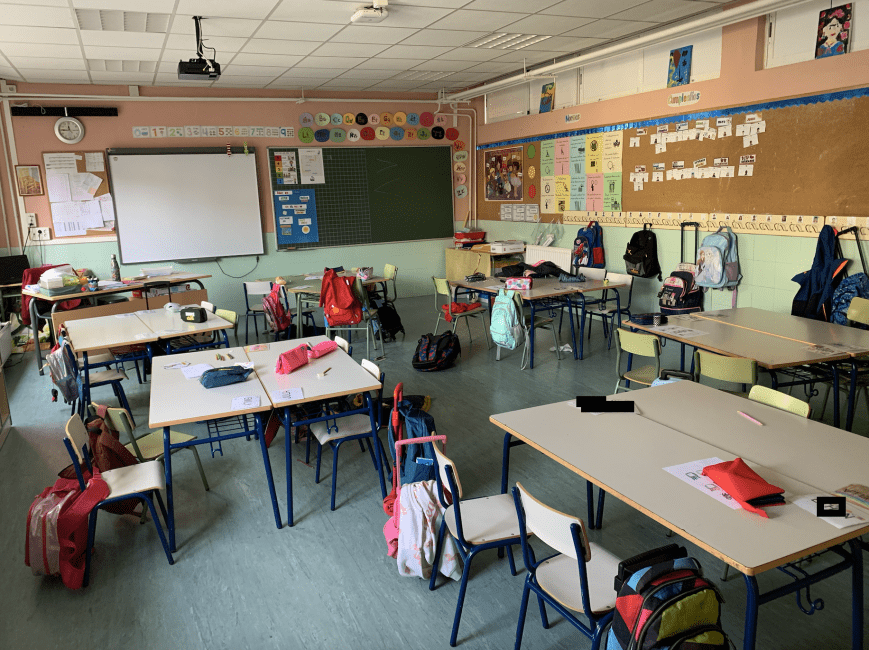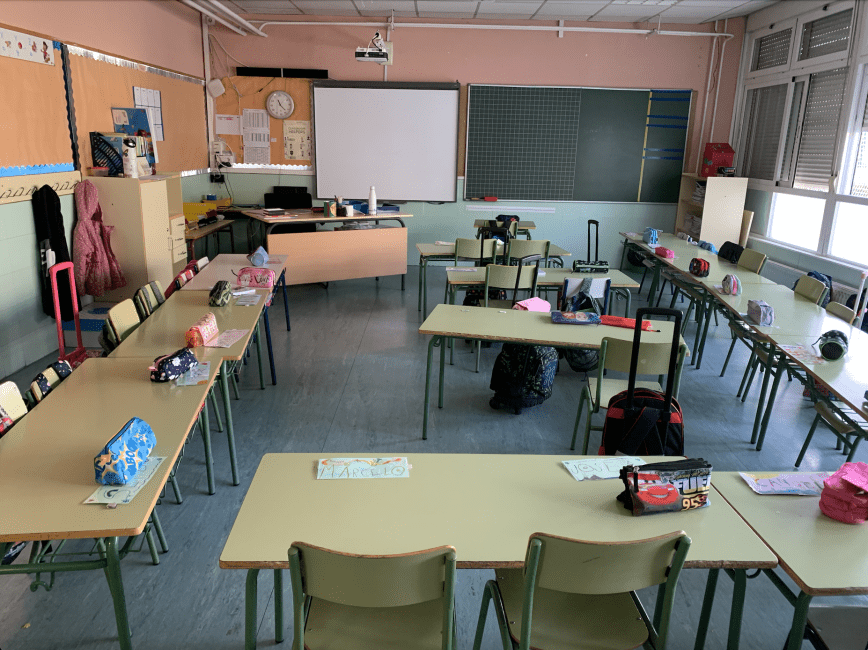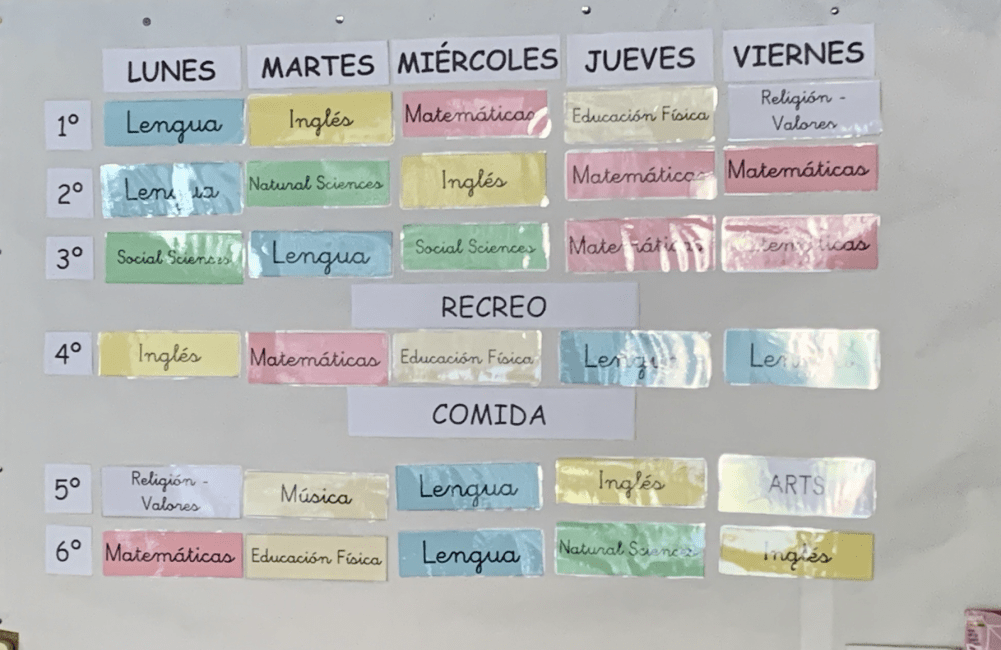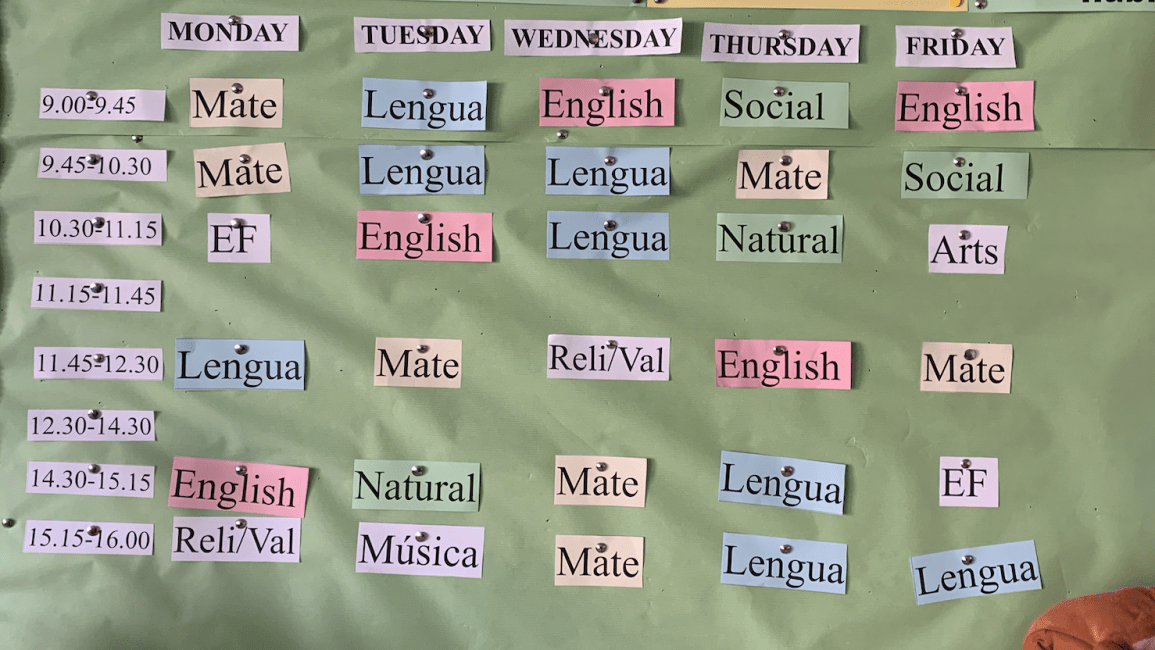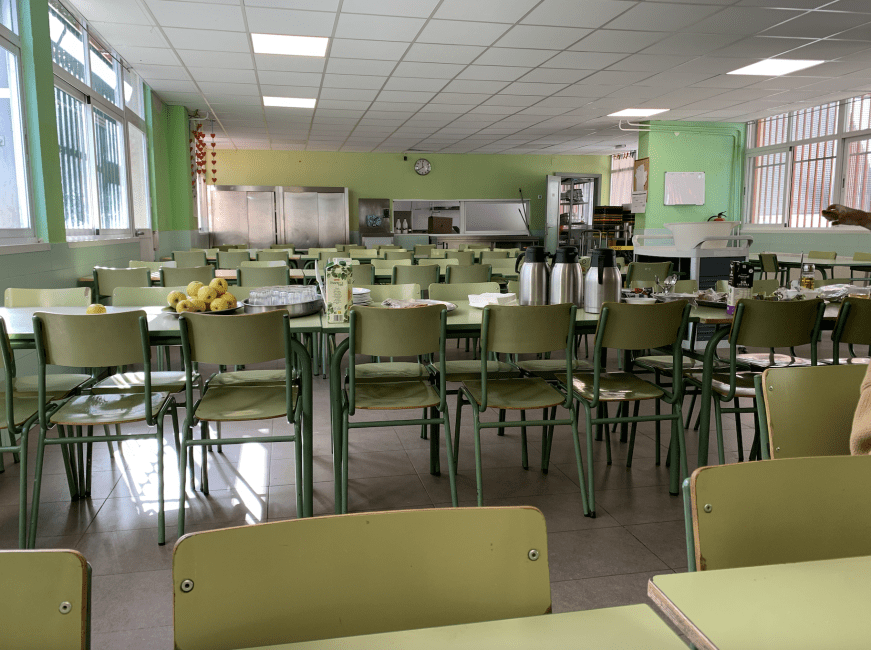Heart, Mind, and Soul: An Explanation of School Schedules and Students in Madrid Spain
School Schedules: A schedule in a school that flows well can make or break a school day for both the students and the teachers. In Arizona, at the school I worked at, each grade level was in a whole different world. Their schedule differed from grade-to-grade level. The schedule was designed so that each teacher had 40 minutes for lunch and at least one prep period during the specials class. Here in Spain the school operates very differently than the school in AZ. Not only are the schedules the same for each grade from breaks to lunch time all the teachers take the breaks together. The type of classroom management used is very different from what is taught in the U.S. It does vary from teacher to teacher like in the US but in Spain the students have a less strict protocol for behavior. Everyday teachers get a break in the morning from 11:15 to 11:45 to go down to the cafeteria eat a bit of food, get some coffee and chat with their coworkers. Then they go back to class for forty-five minutes. At 12:30 students are released for lunch, now here is where it gets interesting. Teachers are free from 12:30 until 2:30 to eat, work and do anything else they need to do. At 1:30 after the 3- and 4-year-olds are done eating, teachers go to the cafeteria to get food that they purchase from the cafeteria. The food is delicious and nutritious. While I can’t speak for every school within Spain, the staff at my school is very small. It is called a Lina Uno which means there is one class per grade level. Lina dos means two classes per grade and Lina Tres means 3 classes per grade and well you get the picture. As a Lina Uno the class sizes are not as large as you imagine. The classes I have been in so far have about 23-25 students. The students get the benefit of staying in their own personal space (desk) and two teachers move between the classes depending on the subject.
For example, the 1st and 2nd grade classes have two main teachers for the purpose of this blog let’s call them Teacher S and Teacher E. Teacher E will instruct the students in natural science, social sciences, and English in English. Teacher S teaches Spanish and Math in Spanish. They teach these subjects to both grades. So, while teacher E is teaching social sciences to second grade teacher S is explaining math to the first grade. Then they swap, and each day it is different. It will be fun to see how the kids work with this process.
Curriculum : The community of Madrid recently updated the requirements of what was required for the curriculum. As of this school year there are new books and new lessons throughout the school. It was shared with us that that the books had just arrived the week before October 3rd, so the students were seeing the books for the first time just as we were. The students also have a choice between a religion class or a values class. The religion class is taught with the basis of Christianity and the values class sounds like it is focused on social emotional learning.
Classroom Management : The definition of classroom management according to Oxford Bibliographies is “the actions teachers take to establish and sustain an environment that fosters students' academic achievement as well as their social, emotional, and moral growth”. Based on this information and the teachers I have observed there are things in place to provide a such an environment. They have attention grabbers such as 1-2-3 eye on me and kids say 1-2 eyes on teacher’s name, or a countdown to get attention. The first and second grade teachers both agreed that they were going to focus on keeping the kids in order. Like making them line up in straight lines, raise their hand if they need something. Ask before using the restroom and raising hands to leave your seat. They may ignore little behaviors such as side conversation, but teachers will still stop and wait, giving students an opportunity to settle down. Each teacher has their own way of approaching each situation. Students are still given work and expected to complete it in the allotted class time. Teachers have routines to start off the morning and reward systems with stickers and activities. Locations for backpacks, water, and jackets within the classroom. In the end the classroom management is in fact seen in the classroom, it just looks different from what many are used to in the United States due to the fact they ignore some of the side conversations or unwanted actions.
Kids will be kids :Kids are kids no matter where they are from. I must admit I have had many years with 4th graders and now I get to experience the younger grades and one higher than 4th. Being in the classroom with these tiny little things that just want your attention and love has already been a learning experience for me. The little humans in 4th grade that soak up information are so shockingly different than the lower grades. Despite this, the first and second graders have the same whiny complaints and tattles that you can hear with young children. “He laughed at me. She touched me. He is drawing on the desk.” Yet the kids will grab your hand, holding on for dear life even as you attempt to walk away. They interrupt each other and they will walk up to you and tap your leg a million times even as you help another student with their work. They will ask you to repeat your name a million times and still not remember it. Tiny little humans are the same little sponges that soak up attention and anything you tell them.
Becoming an Auxiliary has brought me to an amazing opportunity to explore the field of education outside the United States. I have seen new forms of classroom management, crazy schedules, and met so many children during the first week of school. I can’t wait to share unique things that are done within the Madrid schools that seem unusual to us and me.
Related Posts

TWICE with CIEE: Kayleigh in Spain (PART 2)
Kayleigh is a CIEE alum who participated in CIEE's Teach in South Korea program AND CIEE’s Teach in Spain Volunteer program! CLICK HERE to read her experience in Korea. WHY... keep reading
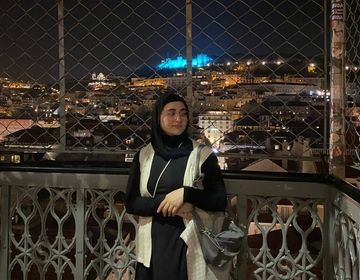
CIEE Volunteer Spotlight: Meet Layla!
Where are you from? What was your academic background or career before teaching abroad? I am Canadian, specifically Québécoise. In Quebec, students are required to attend community college (CEGEP) before... keep reading
